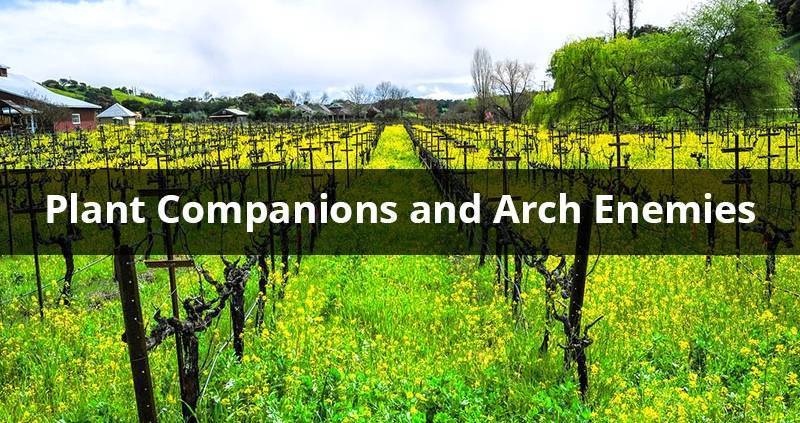Mutually beneficial relationships exist all throughout nature, between birds and insects, insects and flowers, flowers and your favorite garden veggies. Many of your garden veggies are also engaged with mycorrhizal fungi, a healthy fungus that transfers nutrients. There are some companion plant celebrities, like mustard that grows in the vineyards of California, or asters and goldenrod that seem to always find each other in a wildflower field. Regardless, there are often deep-rooted causes and impacts of these relationships.
Mustard plants are rich in phosphorus, and when they are tilled under, they provide necessary phosphorus levels for wine grapes that need it. Mustard seeds are also quite hearty, and can survive in dormancy for as much as twenty years (Sonoma County Tourism, 2020). Mustard also happens to have strong root systems, which protects against soil erosion. And lastly, the glucosinolate which makes mustard spicy and odorous protects vineyards against destructive nematodes (Sonoma County Tourism, 2020).
Asters and goldenrod have a completely different relationship. Each flower attracts pollinators, but often very different pollinators, contributing to their mutual proliferation when they accompany each other in a wildflower field. They are also natural deterrents for deer, host significant pest predators like spiders, praying mantis, and assassin bugs, and fight against powdery mildew and fungal and bacterial leaf spot (Trees for the Future, 2020).
For the purpose of your garden or farm, identifying these relationships among different crops and exploiting them is a great way to both uphold a quasi-natural ecosystem and promote crop health, grade, and yield. Intercropping in general naturally protects against pests as they are more likely to be confused by the combination of plants. And, some plants are better than others at being natural pesticides such as alyssum, nasturtium, marigolds, salvia, “spider flower” or cleome, camomile, garlic and herbs (particularly chives, rosemary, and mint). Many of these contain biofumigants like mustard does, naturally occurring smells that deter pests. Others, like cleome and marigolds to some extent, also have fuzzy or spiky textured foliage that pests can’t stand. There are also countless vegetable companions including, but not limited to: lettuce and mint (mint repels lettuce-loving slugs), spinach and peas (peas provide much needed shade for spinach), cabbage and rosemary (rosemary repels the cabbage fly), tomatoes and marigolds (marigolds repel hornworms and nematodes), radishes and cucumber (radishes repel beetles and aphids), and members of the cucurbit family and flowering plants (flowers help pollinate cucurbits) (Trees for the Future, 2020).
Similarly, some plants can stunt another’s growth or even be poisonous. Some can even attract arch enemies, such as tomatoes which attract corn worms and corn which attracts tomato worms (Trees for the Future, 2020). And, on the other end of the spectrum, there are ways to negatively reverse the relationship that two plants have. A study conducted by Florida International University showed that surplus nitrogen and phosphoric fertilizers resulted in less “sharing” between plants and other plants, plants and animals, and plants and bacteria or fungus (FIU, 2015). This went on to negatively impact plant growth, disease, drought, and food security (FIU, 2015). Therefore, it is critical to keep in mind how intercropping can potentially impact crop health for the worse, and how non-organic practices can be detrimental to positive plant relationships.
https://www.sonomacounty.com/articles/magic-mustard-vineyards
https://trees.org/post/companion-planting-101/
https://newsarchives.fiu.edu/2015/11/humans-disrupt-relationships-in-nature-study-finds



